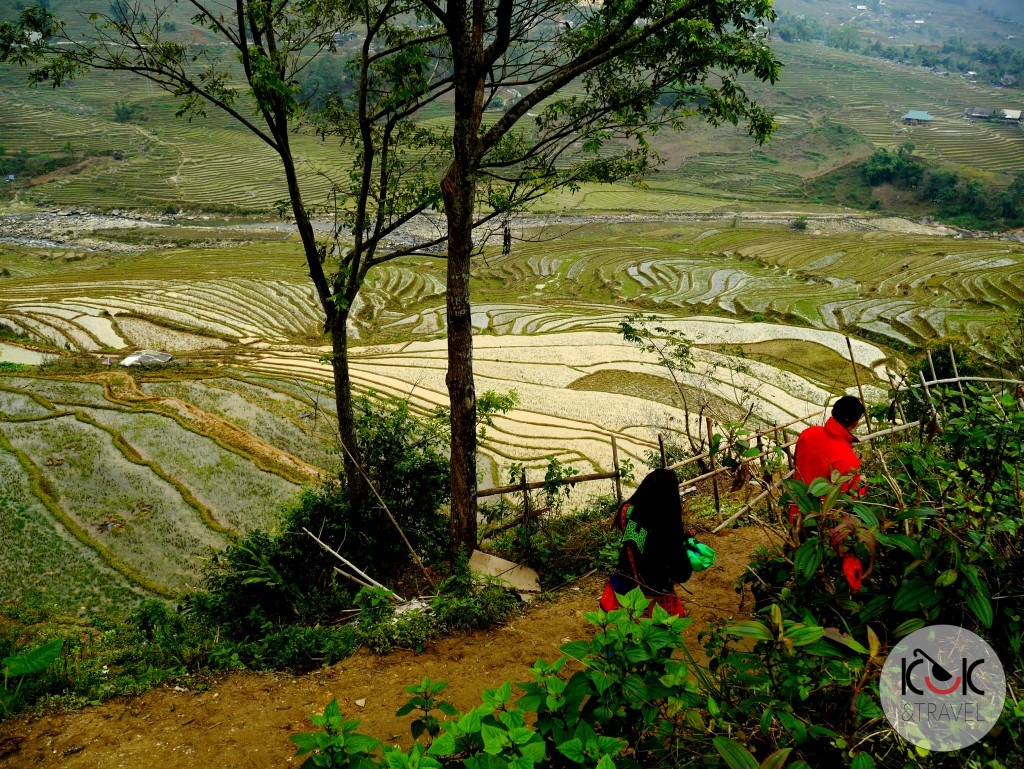
When visiting the north of Vietnam it’s worth stopping for a moment at one of the places that will delight us with their unique ambience. Cooler mountainous areas with rice fields in the most known Sapa, Ba Be or some other less known places in the area allow you to escape from the crowded cities and get to know local culture, customs, visit small villages, be a part of this picturesque world! The hotels do not have the central heating, but there will bea heated mattress waiting for you on your bed so you will not get cold! And you will pay 10USD per night for a double room 🙂
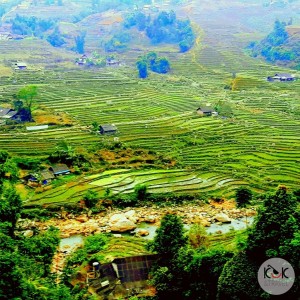
To get to Sapa first we took a train from Hanoi to Lao Cai and then a bus to our destination. As the only available train on that particular day was only the upper class compartments, for which we had to pay 17,5USD per capita and we have to admit that we had not slept in such good conditions for quite a long time 😛 Moreover, we had luck that our 4-person compartment was only for the two of us! An elegant bedding, curtains in the windows, snacks and drinking water, pillows embroidered with the name of the company with a golden thread and soft beds – it all was making a good impression, and frankly we’re not sure whether in our country you could use similar luxurious train compartments for sucha a low price.
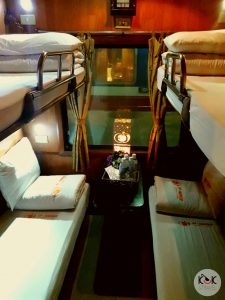
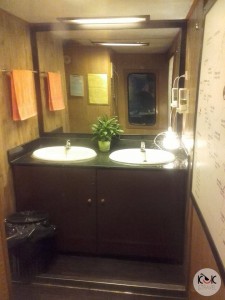
This is how the 1st class best train compartment (just for 2 people) looks like:

The journey by train lasted 8 hours, we left Hanoi around 10pm, got to Lao Cai at 6 o’clock and from there took a bus for 40,000 dong (it took us an hour to reach Sapa).
In Sapa we stayed in Sapa Rose Hotel located in the center of the town. The room we had was really huge and the bed had a heated mattress. It was terribly cold in the hotel even when the outside temperature reached 22 degrees during the day (perhaps 14-15 degrees) so we wouldn’t be able to imagine to spend the night there without the heated mattresses.

You can do some sightseeing in Sapa and its surroundings on a motorbike, get to places with beautiful rice terraces, but while on the route: Lao Chai – Ta Van at a later stage of the trail there is no possibility to continue the ‘trekking’ on a bicycle or motorbike as you have to go through the bushes, up to a waterfall, and honestly – the trail is no longer marked, so you’d better think about having a tour with a guide. We paid 15-16USD for half a day trekking including transportation, lunch and a local guide:
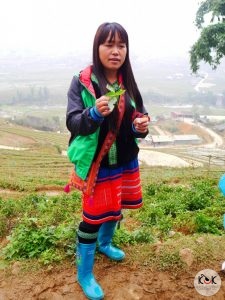
We learned a lot about the life of Hmong tribe and also saw the interior of the huts in which they live. Most families have 4 children and all the family is squeezed in one dormitory room when sleeping. Moreover, the first chamber that we enterered was a large room where there as everything and nothing, it was a kitchen with a fireplace, a TV somewhere in the corner and other stuff – lock, stock and barrel.
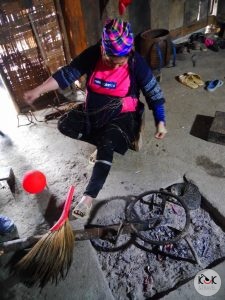
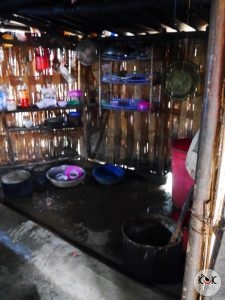
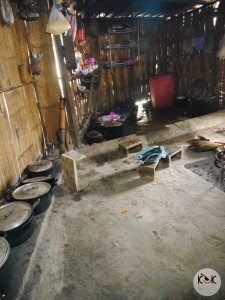
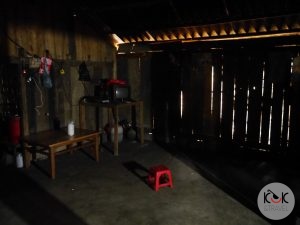
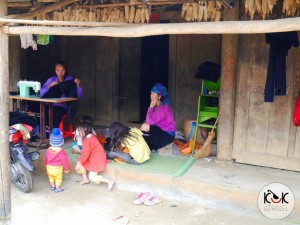
In Sapa you clearly see women working in the streets and there are very few men. It’s the woman that is the main breadwinner of the family and wears the trousers in the house, she sells fruit, vegetables or fabric in the market, she can be a tour guide, because it’s easier for her to learn English rather than for men, and she is open. Men from Sapa are rather shy, prefer staying home, and breeding pigs, herding cattle, preparing meals for children, working in the field. Even when the woman comes back home really exhausted after the whole day of work, she is also going to the field, looking after the children, preparing dinner, and in the morning if possible she gets up at 4:00 to leave a little bit hoping that maybe she will sell the fabric in the market on the same day. If the family has more than 2 children, older siblings must carry the youngest ones on their backs to help their mother in sales, which normally means they have to quit school and probably will not be able to continue it in the future. Most very young children accost tourists already able to speak a few words in English and try to sell colorful bracelets .. The mother takes a 5-month old child when going to work in the town and carries him on his back, no matter if she is working in the field, in a shop, or anywhere else, the child is hanging constantly on her back. And the strangest thing in all this is that these children are terribly polite, do not whine or complain even though they do not have their socks on the feet at the temperaturę: 14 degrees …
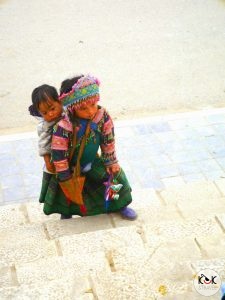

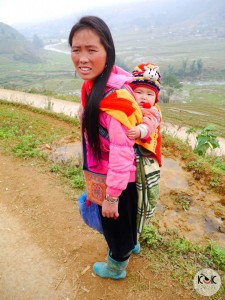
Primary and secondary education is for free in Sapa and there are schools attended by local children, but they need to pay for high school and actually the closest one is located in Lao Cai, and very few people can afford it.
Such pieces of information as the ones mentioned above by our guide made our tour really interesting. The tour guide took us to a place where fabrics are made in the village. We were already more than once in similar places but we have to admit that this time it was much more interesting because she was demonstrating to us how to do many things. Then we were offered a raw sugar cane at one of the stalls. Oh yes! In Vietnam, they eat it raw, or rather suck its juice out, and then spit out the rest of parts of the cane that cannot be eaten. Incredible sweetness in the mouth makes us realize that you cannot eat it in big quantities.
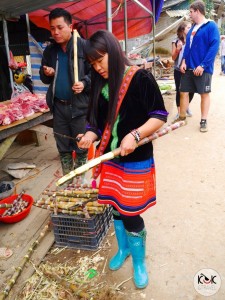
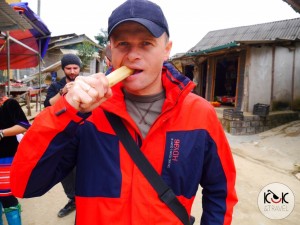
Later we went for lunch in the village. We had to wait a bit more as, suddenly the electricity was cut off in the village.
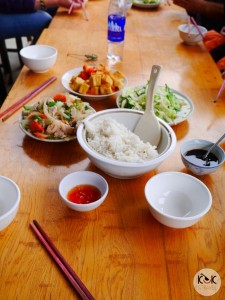
We were surrounded by spectacular views during the whole trek, at first the fog covered the ladscape but later you could see how the scenery is uncovered 🙂
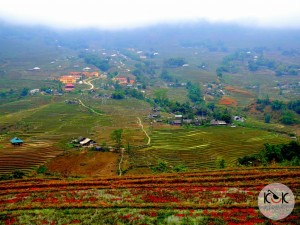
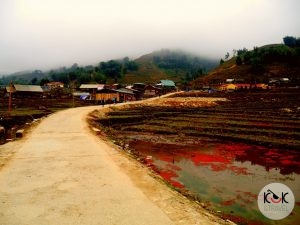

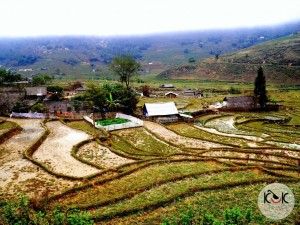
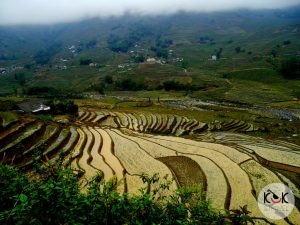
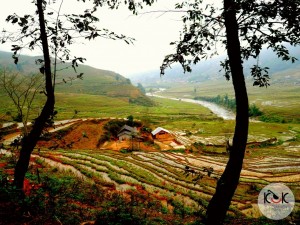
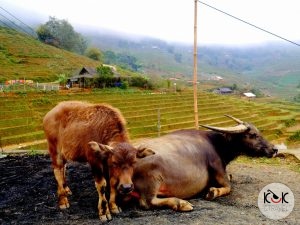

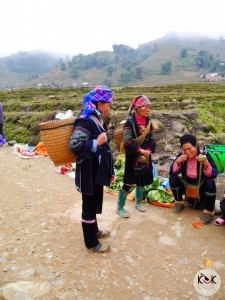
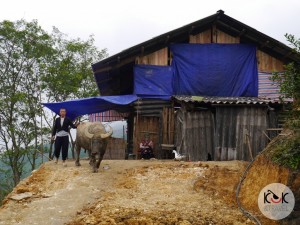
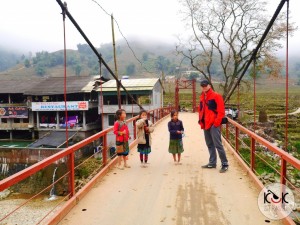
A school in the village: 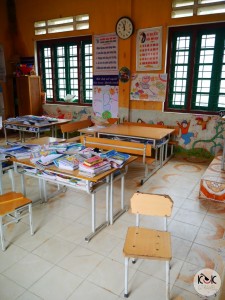
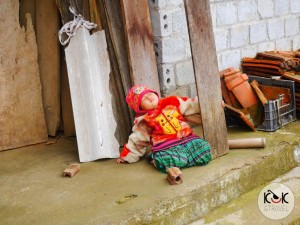
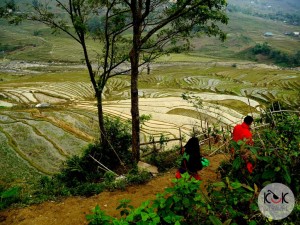
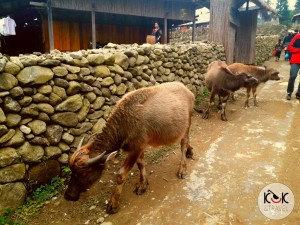
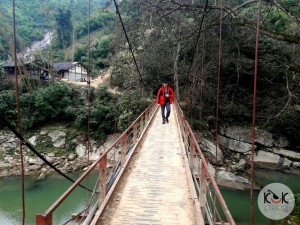
From the very beginning of the trek there were some tribe women that accompanied us, approaching each and everyone in our group with questions: ” Where are you from? ” ” How long are you staying here? ”. As it turned out a little bit later these women were waiting for the right moment to ‘’catch’’ anyone to buy their goods, first everyone was taking pictures with them but later their presence started to be irritating, they were following us half the way. As soon as we figured out that something was wrong there, when they started interviewing us even more, we ‘’jumped’’ a few steps forward close to our guide not to skip interesting information that she was passing everyone. The downside of the guide was the fact the she was pronouncing incorrectly many English words, we had to ask her to repeat what she had in mind quite a lot of times. Half of the group did not understand her.
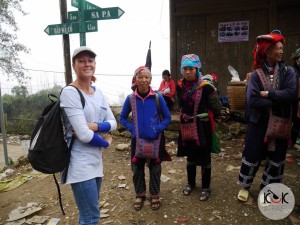
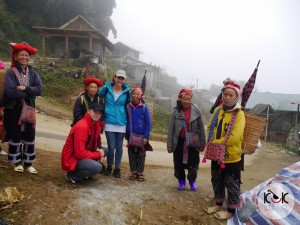
What else can you see in Sapa?
You can rent a motorbike and explore its surrounding area, e.g. go to Cat Cat Village, or see waterfalls. The following map should help you a bit 🙂
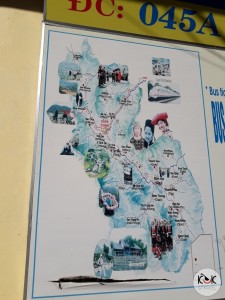
Besides, the town itself is charming. You can walk near a small lake and a park. The town is surrounded by mountains which for half a day are shrouded in mist giving it an aura of mystery. It is worth walking down the narrow streets in the town and enjoy mulled wine for about 50,000 dong (2USD) in one of the bars on the way.
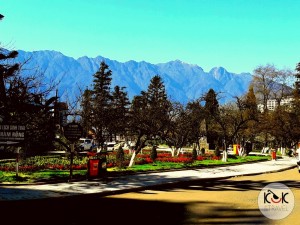

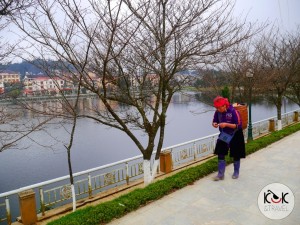
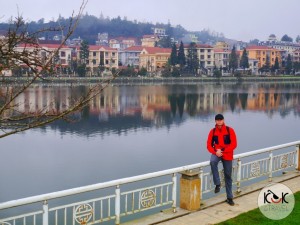

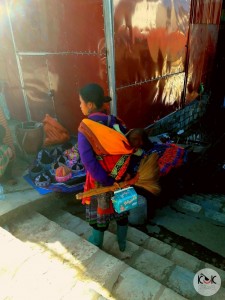
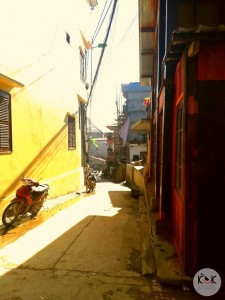
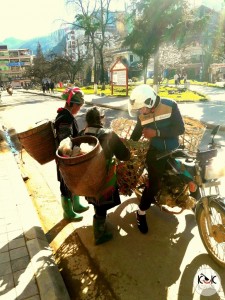
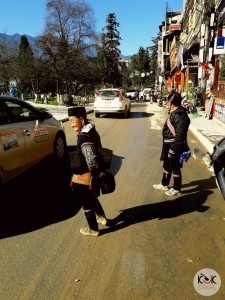
As for the food, unfortunately, you should not expect such cheap meals as in Thailand, Cambodia and Myanmar. However, the cheapest option is to eat street food: you can buy skewers with grilled chicken or pork for 10-15.000 dong/0,50-2USD, sweet potatoes for 10,000 or sticky rice at the same price. They also sell some grilled birds on the way to the lake:

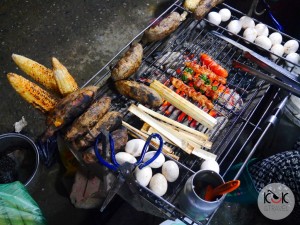
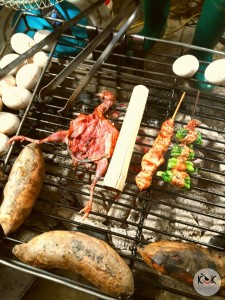
We will also for sure associate Sapa with the taste of roasted almonds sold in shells (half a kilo cost us 3,5USD), which we were devouring in the bus and train back to Hanoi. This time we took the 2nd class train for 10USD per person and ‘the quality’ obviously differed a lot from the last time hehe :):
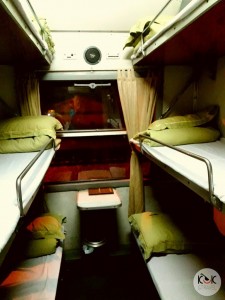
And here you can see the tasty almonds, which you had to peel off 🙂 Yummy!
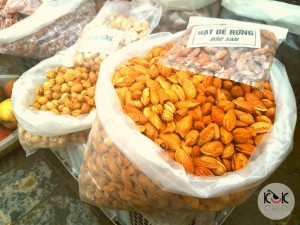
In general in Sapa you could come across a variety of nuts and dried fruit:
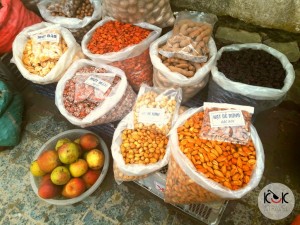
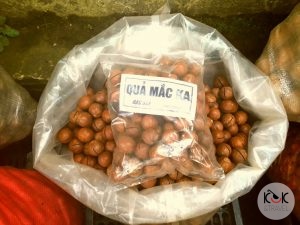
But before we hopped on the train we walked down the streets of Lao Cai and visited the market there, which was colourful with myriads of fruit, and you could also feel the typical Vietnamese climate: there you can’t get a chicken in the store, instead you need to come to the market and watch a slaughter with your own eyes, they kill a hen for you, the blood is gushing in all directions, and you wait patiently until the seller ends the slaughter.
Moreover, they are selling body parts of animals broken in pieces: e.g. a leg with hooves, a black pig with fur and its guts jutting out. At least people here are more aware of what’s going on with the meat before it lands on a plate …
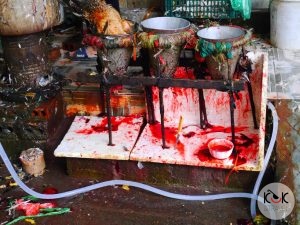
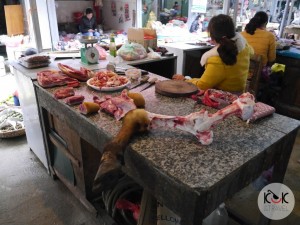
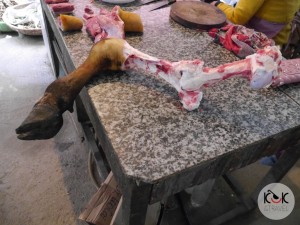
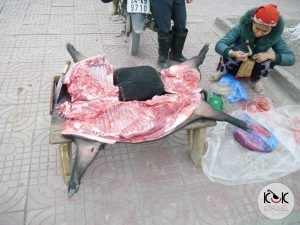
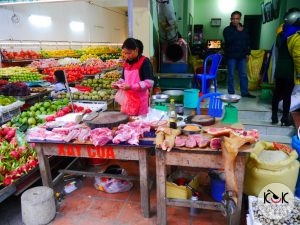
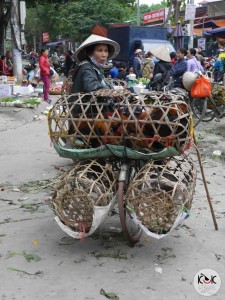

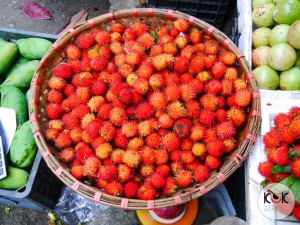
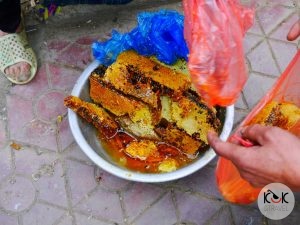
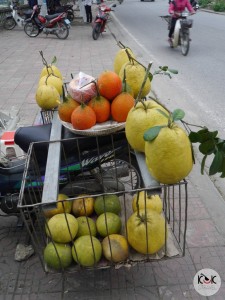

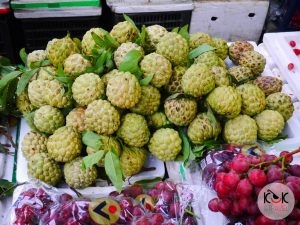
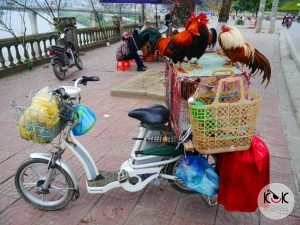
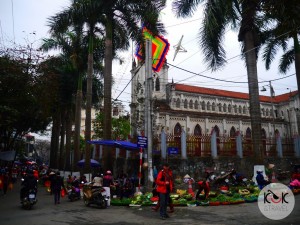
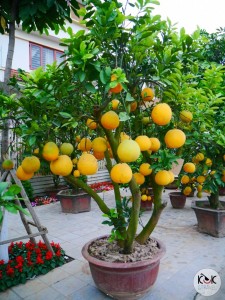
Sapa surprised us with very few tourists at that time… probably we arrived there just in the best possible moment, out of season, and this helped us to appreciate its charms. Northern Vietnam is beautiful, especially if you want to escape from the swarms of tourists, whom unfortunately you will encounter anywhere else in the country!
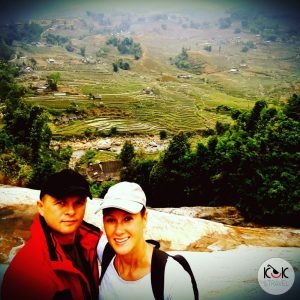





Cześć, przełom październik – listopad bedzie ok na ten rejon Wietnamu 🙂 ?
Hej, Mateusz, po wrześniu pogoda może być bardzo w kratkę w Sa Pa. Czasami zdarza się, że leje, a czasami, że jest po prostu wilgotno w powietrzu, mgliście rano, ale mgła później opada. Zależy od przypadku, niektórzy moi znajomi trafili z pogodą, a niektórzy nie. My tam byliśmy akurat w styczniu (też niepewny miesiąc), ale podobało nam się mimo chłodu i mgły. Warto zaryzykować 🙂
Bardzo ciekawie opisane i dużo praktycznych informacji. Ja znam tylko południowy Wietnam: Sajgon i okolice, ale ta część Wietnamu mi się spodobała i chyba w maju się tam wybiorę. Pozdrawiam
Dziekujemy, Marku! To trzymamy kciuki za wyprawę w maju 😉 pozdrawiamy